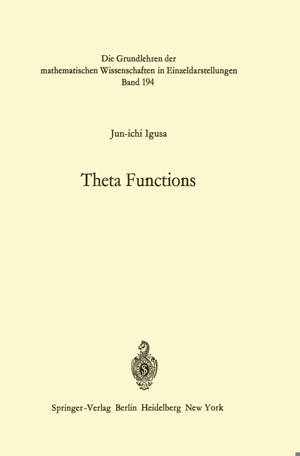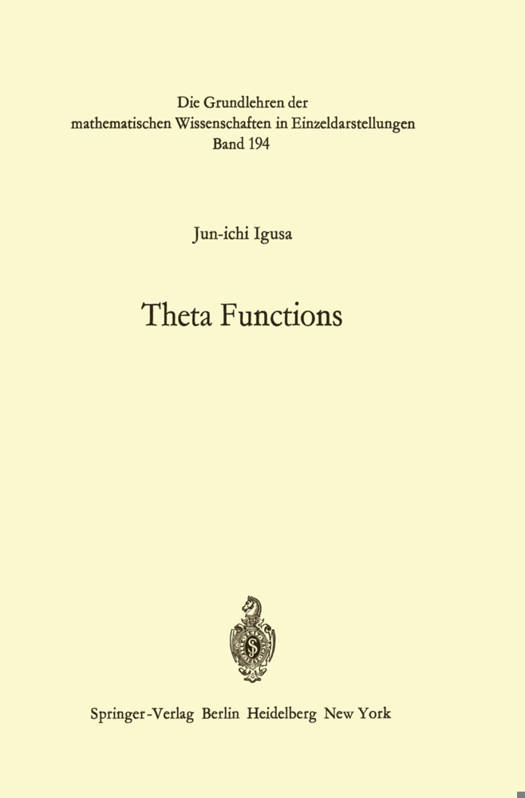
- Afhalen na 1 uur in een winkel met voorraad
- Gratis thuislevering in België vanaf € 30
- Ruim aanbod met 7 miljoen producten
- Afhalen na 1 uur in een winkel met voorraad
- Gratis thuislevering in België vanaf € 30
- Ruim aanbod met 7 miljoen producten
Zoeken
Omschrijving
The theory of theta functions has a long history; for this, we refer A. Krazer and W. Wirtinger the reader to an encyclopedia article by ("Sources" [9]). We shall restrict ourselves to postwar, i. e., after 1945, periods. Around 1948/49, F. Conforto, c. L. Siegel, A. Well reconsidered the main existence theorems of theta functions and found natural proofs for them. These are contained in Conforto: Abelsche Funktionen und algebraische Geometrie, Springer (1956); Siegel: Analytic functions of several complex variables, Lect. Notes, I. A. S. (1948/49); Well: Theoremes fondamentaux de la theorie des fonctions theta, Sem. Bourbaki, No. 16 (1949). The complete account of Weil's method appeared in his book of 1958 [20]. The next important achievement was the theory of compacti- fication of the quotient variety of Siegel's upper-half space by a modular group. There are many ways to compactify the quotient variety; we are talking about what might be called a standard compactification. Such a compactification was obtained first as a Hausdorff space by I. Satake in "On the compactification of the Siegel space", J. Ind. Math. Soc. 20, 259-281 (1956), and as a normal projective variety by W. L. Baily in 1958 [1]. In 1957/58, H. Cartan took up this theory in his seminar [3]; it was shown that the graded ring of modular forms relative to the given modular group is a normal integral domain which is finitely generated over C.
Specificaties
Betrokkenen
- Auteur(s):
- Uitgeverij:
Inhoud
- Aantal bladzijden:
- 234
- Taal:
- Engels
- Reeks:
- Reeksnummer:
- nr. 194
Eigenschappen
- Productcode (EAN):
- 9783642653179
- Verschijningsdatum:
- 11/11/2011
- Uitvoering:
- Paperback
- Formaat:
- Trade paperback (VS)
- Afmetingen:
- 156 mm x 234 mm
- Gewicht:
- 358 g

Alleen bij Standaard Boekhandel
+ 396 punten op je klantenkaart van Standaard Boekhandel
Beoordelingen
We publiceren alleen reviews die voldoen aan de voorwaarden voor reviews. Bekijk onze voorwaarden voor reviews.








